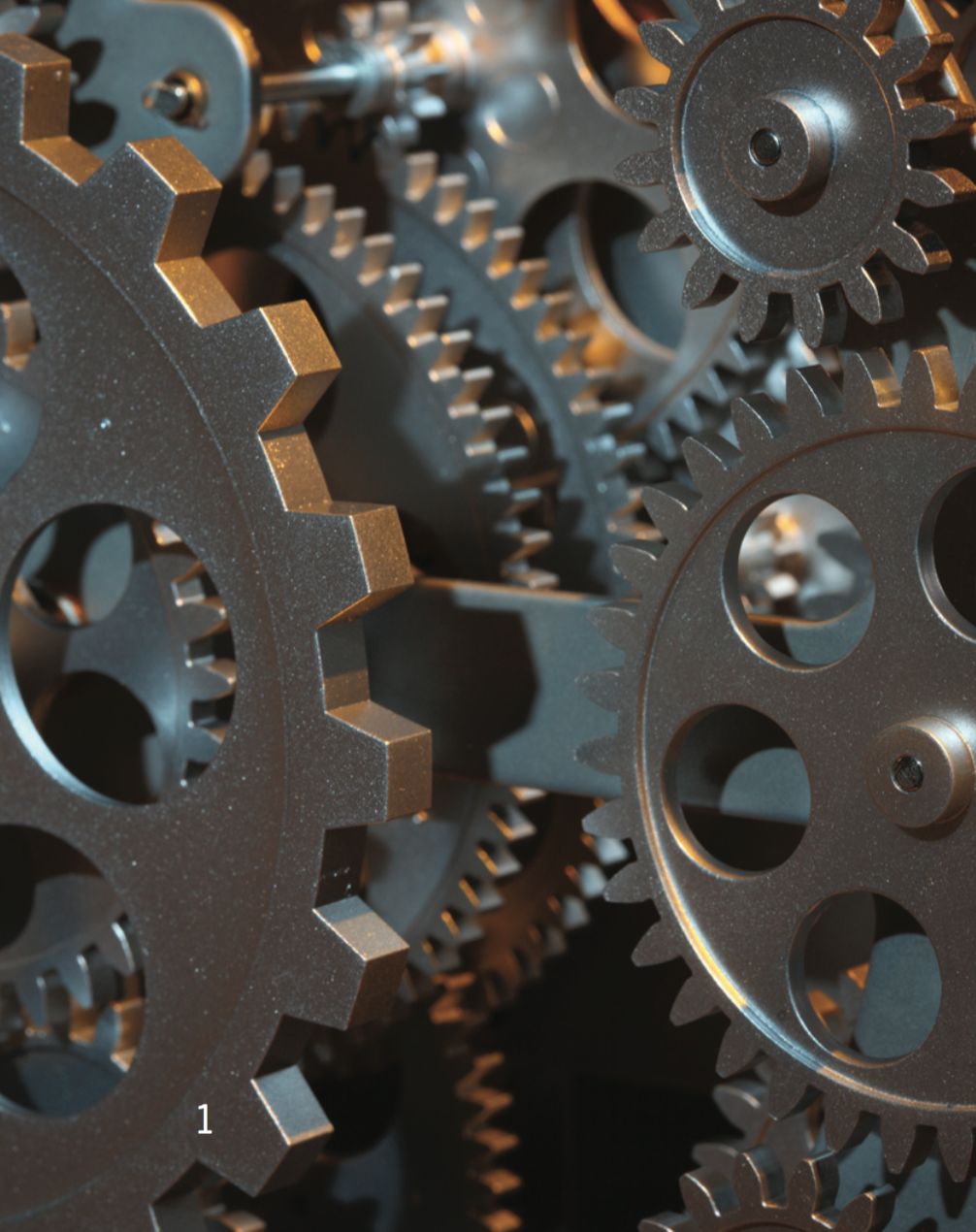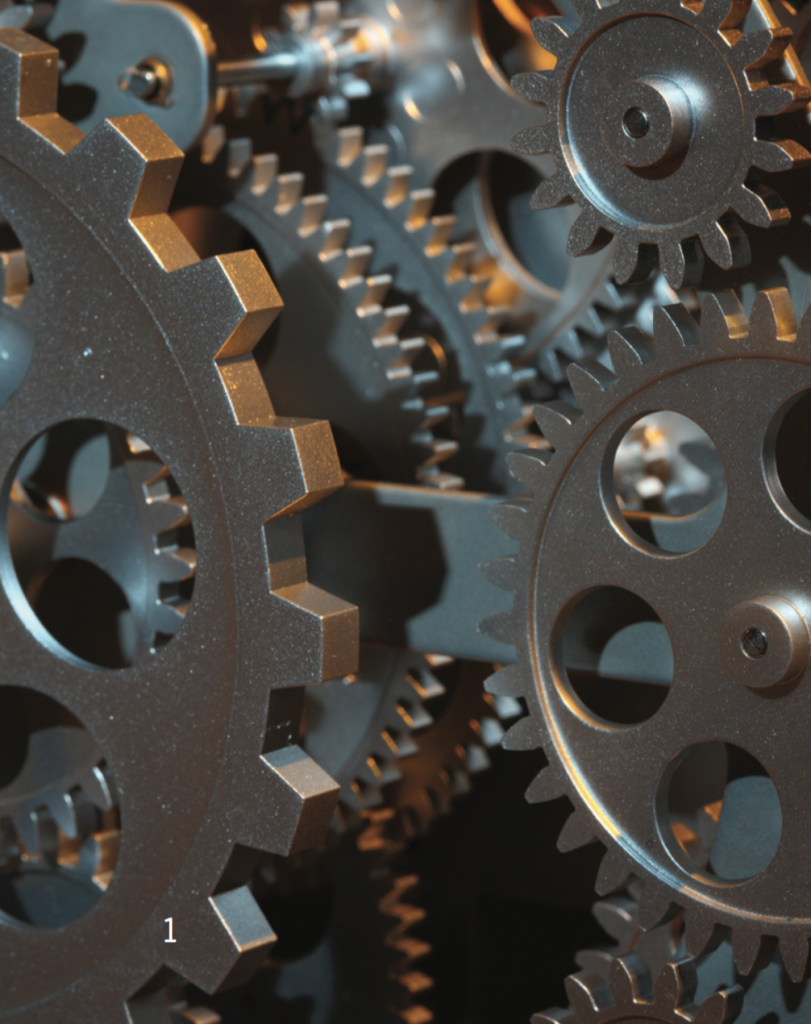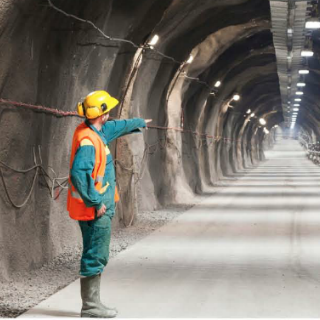
Introduction
Manufacturing is at a crossroads today, with significant uncertainty in how its future will play out. Understanding these uncertainties and potential futures is not only vital to companies that participate in the manufacturing ecosystem, but also to the development of nations and the overall world economy. Key uncertainties include the evolution of manufacturing in mature economies, the role that design plays, impact of technology advancement, and most importantly, the impact to manufacturing from growing environmental consciousness.
This paper examines the manufacturing landscape in 2025 and beyond from four perspectives: disruptive production processes, availability of new materials, shifts in the supply chain, and the road to a zero-carbon footprint future. We describe potential futures in each of these four areas, and identify impacts to the industry at three different levels—the manufacturing ecosystem, the plant and production processes and business models.
Disruptive Production Processes
Design capability and integration with the production floor allows made-to-order custom specifications and an Economic Order Quantity of 1 is realized.
Impact to the Manufacturing Ecosystem
Exploding population and increasing wealth, especially in emerging nations, will create significant demand for manufactured goods, indicating a bright future for the manufacturing industry.
However, the future is likely to see regional disparities with China and India capturing a disproportionate share of the new manufacturing economy. The manufacturing value chain will also be de-integrated, driven by design/manufacturing separation and the need for nonlinear supply web which increases security to deliver. Globally accepted design standards and cloud computing are the primary enablers of the resulting transition of value from manufacturing to design.
This enables small- and medium-sized companies to gain share; distributed/local manufacturers assemble for local use and transport. In the sectors where manufacturing fragmentation takes hold, the role of the OEM changes to that of a specifier.
Impact to the Manufacturing Plant and Production Processes
Future production processes take advantage of the growth of disruptive technologies such as additive manufacturing (e.g. 3D printing) and new materials.
Design capability and integration with the flexible production floor allows made-to-order on custom specifications and an EOQ of 1 is realized without the traditional cost and complexity implications.
Digital 3D modeling techniques are a key enabler to the additive layer and other new flexible manufacturing processes as the design to build language standards have been established.
The factory of the future will be reconfigurable with flexible tooling and a flexible design floor to accommodate different processes.
There will be increased automation with more robotics and IT on the floor. This lowers the demand for labor but shifts the requirements to high skill and training.
The move to modularization also impacts machinery that is smaller, lighter and electric.
Maintenance will be marked by the use of predictive technologies and diagnostics; maintenance of electronic parts will become critical and software will drive differentiation.
Again, computing power enables full understanding of manufacturing variability. This finally enables lights out machining and manufacturing by 2030, as the variability is continually compensated for and corrective actions automated.
Business Model Impacts
The future could see the transition from machinery ownership to manufacturing purchase use.
In many sectors, scale becomes less important—cottage manufacturing is enabled by the growth of cloud computing and design standards, allowing “artisans” to compete effectively with larger companies.
New Materials
The fields of material science and chemistry merge in the quest to design new materials that meet specific application needs.
Impact to the Manufacturing Ecosystem
There is no longer a distinction between materials and chemistry as companies look to drive innovation that combines and develops new materials, from metals, alloys and composites to nanomaterials. The race to innovate is in cracking the code for scaling production of these new materials—and understanding their performance boundaries.
The scarcity of natural materials and the effort to develop sustainable products drives this innovation; both regulations and consumer demand are considered to shape the nature and timing of these innovations. New uses of materials are discovered, and materials are designed to meet specific requirements and applications.
Impact to the Manufacturing Plant and Production Processes
Greenfield to production uses engineered trusses, with machines and robots handling messy, dirty processes; more and more we are designing structures within structures at the base level of structural integrity. Metals still comprise a significant portion of materials in manufacturing, but there is a significant shift in metal usage and process.
The impact of new materials is felt in manufacturing, in areas such as fabricated goods, machinery manufacture, energy and transportation equipment.
Ceramics are now used in engines, and composites became mainstream, such as in car exteriors by 2016.
New materials are used in building construction, such as ultra-high performance concrete that uses less energy, is lightweight, and more economical. While innovation drives new chemistry, health and safety issues act as a counterforce with legislation, government and union resistance. There is a convergence of technologies on the production floor, such as print on ceramics.
Business Model Impacts
Repair becomes more difficult, especially in new materials such as composites. This is counterbalanced by self-healing applications that use nanomaterials and sensors.
Scaling remains a significant issue in the widespread adoption of new materials.
Supply Chain Shifts
Supply chains will proliferate into supply webs as a means of hedging risk, as well as meeting regional and local market needs and regulations.
Impact to the Manufacturing Ecosystem
The supply chain has transformed into a supply web, with new collaborations and new roles for traditional suppliers. The supply web is segmented, determined by business model and sector. There is a proliferation of supply chains and models, as a means of hedging risk, as well as meeting regional and local market needs and regulations. There is involvement, visibility, and control of all tiers in the supply chain, with the OEM becoming the specifier and/or design gatekeeper. Relationships are important and a holistic approach is used, adjusting work more frequently, with the model depending on volume and value.
Extreme manufacturing is achieved by integration with second and third tiers —albeit potentially a virtual integration. Certification of sustainability is an important driver for supply chains looking to differentiate and meet new regulations. Manufacturing in many sectors becomes localized and uses local raw and multifunctional materials, as well as alternative energy sources where available. IT is a key enabler of the supply web.
Impact to the Manufacturing Plant and Processes
Sourcing is increasingly local and regional, and production processes adapt to accommodate. Late customization enables efficient and optimal use of the supply web, allowing manufacturers to gain scale economies as well as to cater to regional/local market needs and regulations at the same time. Recycling and waste reduction within the supply chain is important, and this impacts all aspects of the production floor.
Business Model Impacts
Companies increasingly look to rent vs. buy materials from suppliers. 2011 examples of this include soft drink cans that are rented instead of purchased. Reliability and traceability are important business model drivers from regulation and consumer demand perspectives.
The Road to Zero
The drive for zero waste leads to Manufacturing Zero: Accountability for the full product life cycle, and products are therefore designed for disassembly and end of life storage systems for electricity, such as hydrogen fuel systems and ammonia storage.
Impact to the Manufacturing Ecosystem
Sustainability is not only an option in the future, as companies look to sustainability for profit and risk mitigation reasons. The real driver is efficiency and competition for ever more scarce or costly resources.
Legislation such as a carbon and water tax plays a key role but only begins to lead us down the road to zero before consumer and market demands make it a necessity.
Gas guzzlers are viewed to be as socially unacceptable as cigarettes were in 2011. Consumers increasingly prefer “good enough” in many products that result in little to no waste.
Impact to the Manufacturing Plant & Production Processes
Manufacturing Zero is the new mantra, with OEMs accountable for full life cycle responsibility. As a result, products are designed for disassembly and end of life.
Radical paradigm changes are developed in the production process through additive manufacturing and other process advancements. The “buy-to-fly” ratio is improved as a result of such new production processes resulting in a reduction in waste of raw materials.
There is increased use of cogeneration, recycling, and less use of water.
Energy production is localized to reduce transmission losses. Innovation is driven in storage systems for electricity, such as hydrogen fuel systems and ammonia storage.
Business Model Impacts
Pay-for-use is the new business model using whole life cost of products. Contract based systems and products increase in use, with no need to own.
This creates new opportunities to service, fix and maintain production environments.
Waste is the new material, with recycling, reuse and mining of waste becoming important as companies carry away used products.
Authored in partnership with Castrol innoVentures Group by Peter Bryant and Satish Rao.
Read The Future of Manufacturing 20/20 in PDF.




